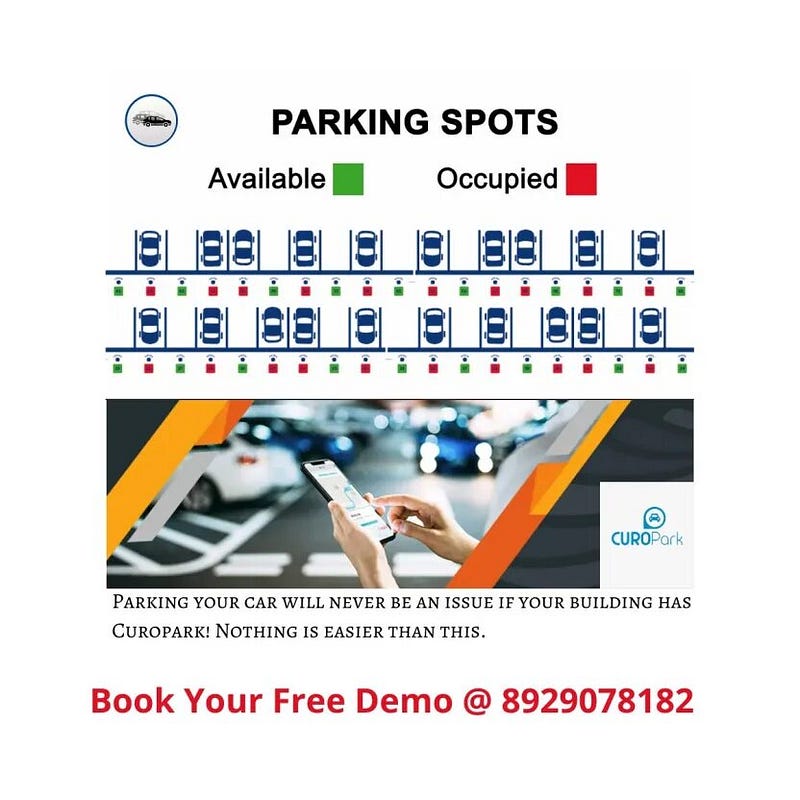How IoT Based Parking Management Systems are transforming crowded cities into Smart Cities!
 |
Cloud-based Parking Management System
Living in a big city can be difficult at times. The number of people living in cities is growing, which means that navigating them will become increasingly difficult over time. It is difficult for most people today to find a place to park their car. More than one hundred million barrels of oil are consumed by people every single day. In comparison to other cities, the cost of fuel in Delhi, India’s capital and one of the most densely populated cities in the world, can be up to one and a half times higher due to the poor quality of the roads and the high volume of traffic.
Because it affects such many people all over the world, it is one of the most significant problems that exist. It is necessary to create an automated parking system that will enable users to reserve a parking space with only a few taps on a mobile application. This system will be required to fulfill this requirement. The situation is completely transparent at this point. However, the most important question is how technology can contribute to the solution of the problem. Is there a way to get out of here? The term “smart parking system” refers to a system that is based on the Internet of Things and that transmits data about free and residential parking areas via a web or mobile app. Each parking spot has the capability of installing its own internet-of-things-based, intelligent parking system, complete with sensors and microcontrollers. After that, the user can monitor the availability of all parking spaces and choose the most appropriate one. Alternatively, the application gives the user the ability to view the length of time they have spent using the parking space, and smart parking meters can be used to calculate costs and send them to the user. In addition to this, the user has the option of extending the duration of their session. The only thing that is required is a working connection to the internet.
Managing Parking in Urban Cities is a daunting task!
Issues with traffic management and parking spaces are among the most pressing in densely populated cities. As more people own cars, more people are driving them, making it harder for motorists to find parking in today’s cities.
Planners in congested urban areas can take advantage of this by implementing Internet of Things (IoT)-based smart parking solutions, which can cut down on wasted time spent looking for a parking spot, as well as traffic and vehicle accidents.
For instance, smart parking utilizing IoT technology can alleviate parking and traffic congestion by informing drivers of the location and availability of available parking spots near their
destination.
Many contemporary cities have opted to implement various IoT-based systems for monitoring purposes due to the rapid development of sensory technology. Some parking services, for instance, boast that their Internet of Things (IoT) smart parking systems provide residents with
up-to-the-minute details on open parking spots.
Such systems necessitate the installation of highly effective sensors in parking lots to house data processing units and dwellings to rapidly obtain real-time data from a variety of sources.

Major Parking Issues in Managing Urban Parking
1. Saturated Parking Spaces, with vehicles outnumbering the parking spaces
2. Misuse of available parking space
3. Wastage of Time and Fuel in searching for an appropriate parking spot
4. Locating your own vehicle in a large parking space
5. Reserved parking lot was taken over by passenger parking.
6. Traffic congestion in & around Parking lots
7. Parking Stress
Innovative Solution To The Urban Parking Problems
Smartphones and other sensors are integrated into a networked system as part of a smart parking system that makes use of the internet of things (IoT). This allows the system to determine parking space or level and provide real-time feedback. To achieve this objective, we use a variety of different sensors in a variety of different locations, including cameras, counters on the doors or gates of parking lots, sensors embedded in the paved area of individual parking lots, and sensors placed in a variety of other locations, depending on the deployment.

Components of Smart Parking
1. Sensors: Sensors are implanted beneath each and every type of road surface, and their precise placement allows them to provide accurate information in real time regarding the availability of parking spaces. The sensors, once positioned and calibrated, allows to detect the presence of vehicle, in the parking space.
2. Cameras: Cameras for the smart parking detection activities are a technological evolution developed to meet the new requirements of urban environments. These cameras can be placed on a lamppost or a high pointview to get a better view. The distance and the accuracy of the measurement depends on the height on which the camera is installed and the presence or absence of obstacles around the detection area.
3. Parking Meter: The parking metre (or alternatively, the app) provides information regarding the payment or the title that authorises the user to park in real time. This information allows the user to park legally.
4. Central Server: The data are gathered in one location, which is referred to as the Central Server. Using a radio communication network that makes use of alternative communication protocols or co-present, users can have their sensors, parking metres, or mobile applications communicate with one another in real time. It is the hub of all the information where all data is collected and distributed to all the peripherals of the system — Realtime.
5. Management Software: The data are processed by the management software in real
time, and it makes them accessible to stakeholders via the internet on any type of user terminal (PC, notebook, smartphone, tablet, or PDA) for their use and consultation.
6. Mobile App: The parking app is the central component of the Smart Parking ecosystem, playing a vital role in everything from reserving a parking spot to making a payment. Users can use their mobile devices to gain access to and manage all parking-related functions.
Functioning of IoT-Based Parking System
INPUT: The data is collected by the sensor, which notifies the user in real-time as to whether the parking spot is available or occupied. Additionally, the sensor provides information regarding the parking meter, and the mobile app that sends information regarding payment or the parking permit.
PROCESSING: During the processing phase, all the information that was gathered during the input phase is transferred to the central server by means of a radio communication network. This creates a completely safe environment in which the information can be stored. In fact, there is no way to trace back the data of a user. This guarantees that the data is completely protected and cannot be exploited in any way. The data is then processed by the Curopark management software and presented to the appropriate users’ terminals for use and consultation based on their roles within the system, whether they are administrators, managers, or end users.
OUTPUT: The data is presented to the appropriate users’ terminals for use and consultation based on their roles within the system.
Benefits of SMART Parking System
1. ENHANCED PARKING EXPERIENCE: This makes it easy for drivers to find the best spot quickly, saving them time, money, and work. The space for parking would be used well and a greater number of cars can be parked in the same area, optimizing the parking space.
2. REDUCED CONGESTION: As the entire parking process, from searching for a parking spot to paying the parking charges becomes very fast, the traffic in and around the parking lot reduces considerably, ensuring seamless movement of the traffic.
3. ENHANCED USER EXPERIENCE: Smart Parking Management solution enhances the user’s
parking experience to the fullest. The driver’s payment, finding a spot, looking for a space, and getting a reminder of the time are all made easier.
4. IMPROVED SAFETY: Smart parking is an easy way to make sure people and their vehicles
are safe and secure in the parking lot. Data can be given to parking lot workers so they can better manage the lot and keep an eye out for violations and strange goings-on.
5. REDUCED OPERATIONAL AND MANAGEMENT COST: As the process becomes fully
automated, less number of manpower is required to manage the parking space. This makes the Smart Parking Management Solution, a high RoI business.
Conclusion:
It is possible that the intelligent parking system will make it possible for parking lots to run more smoothly, which is beneficial not only for parking lot managers but also for drivers. The Internet of Things (IoT) is utilized to put the plan into motion so that it can become a reality. The Internet of Things (IoT) and cloud computing are two technologies that are making it possible for smart cities to perform additional functions. Parking has traditionally been the single most important factor in determining how intelligent a city is. Users of Internet of Things (IoT)-based intelligent parking systems have access to real-time parking spots, information on how to park, and time-saving tips. It contributes to the solution to the ever-increasing problem of traffic jams.


Comments
Post a Comment